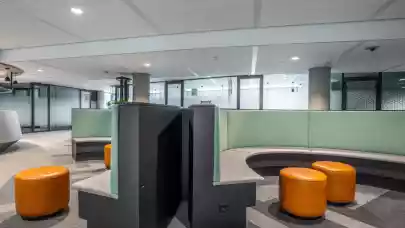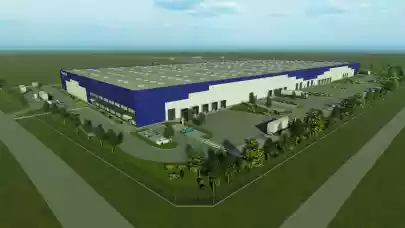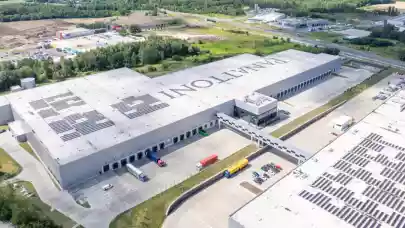Would you have thought that many well know luxury brands have opened stores in Tirana before entering Budapest? This is especially interesting considering the fact that Hungary has a retail stock of 1.3 million square metres compared to 205 thousand square metres in Albania. Through our questions, Stela Dhami, Managing Partner at Colliers International Albania is introducing the property market of a country that is usually off the radar.
Would you have thought that many well know luxury brands have opened stores in Tirana before entering Budapest? This is especially interesting considering the fact that Hungary has a retail stock of 1.3 million square metres compared to 205 thousand square metres in Albania. Through our questions, Stela Dhami, Managing Partner at Colliers International Albania is introducing the property market of a country that is usually off the radar.
Where does the Albanian property market stand in a regional comparison?
The Albanian property market is a growing and developing market, still trying to position itself in the Balkan real estate market. In terms of size the market is small, but combining it with the Kosovan market it becomes comparable with the rest of the Balkans markets. The price of real estate is still low compared to the region, while the underdevelopment of some areas such as the coastal ones presents a great potential for the country to attract investors and buyers of real estate.
How would you describe the modern office market in Albania?
The stock of the modern office space in Tirana, which de facto represents the Albanian office market, has recently experienced a high increase as projects frozen for 3-4 years have entered the market during 2015. However, the quality of the stock is still non comparable to developed European office markets, lacking features like fire escape stairs, raised floors or ceilings, international standards of property management, etc.
What challenges companies trying to find space there have to face?
It is difficult to find large and flexible office space with specific standards of security, appropriate parking spaces, good air quality and other amenities Class A modern office buildings usually offer. It is also challenging to find appropriate property management in the building. Additionally, flexible lease arrangements are not applicable in Albania. Since the office stock has been very limited, the market has been primarily landlord driven and very few concessions are made to tenants’ leases from landlords.
What is the current stock, vacancy rate and the average rent?
At the end of H1 2015 total office supply in Tirana stood at 104,000 square meters including competitive and mixed-occupied Class A and Class B buildings. The current vacancy rate is 13 %. The majority of office supply is located in the city centre (including the Central Business District), while the least favourite submarkets are located in the outskirts of Tirana such as Rinas and on the Tirana-Durres highway. The average office rent rate in Tirana currently stands at €14/sqm/month. Average headline rents have seen little change by falling to €17/sqm/month. There has been a slight decrease in rents with the introduction of new stock in the market.
Is the office market concentrated in the capital, Tirana?
Yes, the office market is completely concentrated in Tirana where more than 60 % of the Albanian economic activity is focused and more than 80 % of the services sector is located.
The secondary cities do not have business districts that are mostly linked with the type of industries developed in these areas.
What are the current trends dominating the occupier market?
In H1 2015 total gross take-up was recorded at 57,868 square meters. The demand appears to have fallen as a result of the economic slowdown. Leasing activity still mostly covers renegotiations and renewals done on an ad hoc basis. Parts of renegotiations include requirements for a decrease in rental rates and or adaptation of the office space.
At the SEE Property Forum 2014 you said that modern retail space only became available in the country around 2005. How has the market changed since then?
Consumer habits have changed dramatically over the last ten years. Nowadays, shopping centres are important retail destinations for most Albanian families as well as home to the most important retailers, which have chosen shopping centres upon high streets. Big retailers such as Zara, Massimo Dutti, Bershka, Stradivarius are now present in the country and young consumers don’t have to travel to neighbouring countries to purchase their goods.

What is the current stock in the retail market? Where and when can we see new developments?
The overall shopping centre stock in Tirana has reached a total of 205,000 square meters of GLA, up from 11,000 square meters in 2005. Shopping centres with the most significant footfall remain Tirana East Gate (TEG) and Qendra Tregtare Univers (QTU). These are oriented outside the city of Tirana, but are still easily reachable. During the first half of 2015 the newest shopping centre, located in the city, have opened, namely Tirana Ring Center. Toptani shopping centre is the only shopping centre under construction which will increase the total retail stock by 60,000 square meters in the centre of Tirana and is expected to enter the market in H1 2016.
At our conference in Belgrade you have mentioned that there was increasing interest in Albanian properties from investors in the Middle East. Has that changed since then?
Due to the reduction in oil prices most Middle Eastern investors seem to have lost their appetite for lesser known markets such as Albania. They remain significant players in the more established markets of London and Paris.
What do you expect for the future of the Albanian property market?
In retail, with the opening of new shopping centres the saturation point of the market will be reached. We do not foresee considerable new developments to join the market in the upcoming years. In terms of the continued decreasing trend of consumption and the appearance of a more intelligent buyer, retail operators are adapting to new demands in the market. Some shopping centres, which sought to attract high income consumers by bringing expensive clothing brands into the country, have now oriented themselves towards the general masses. They have done so by means of introducing a diversified range of products and competitive prices.
In the office market, the arrival of new buildings will bring the much needed additional supply, which will have a downward impact on rental rates. This would be an added benefit to the occupiers as Tirana’s CBD holds some of the highest rents in the Western Balkans. The various locations of the offices to be built also make Tirana more attractive to occupiers as now they have multiple options to choose from.



